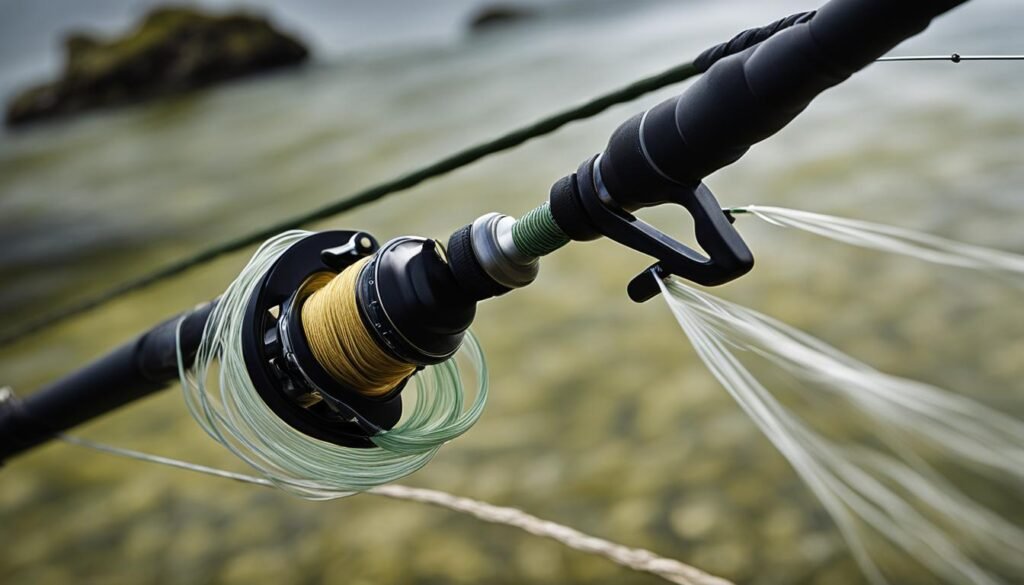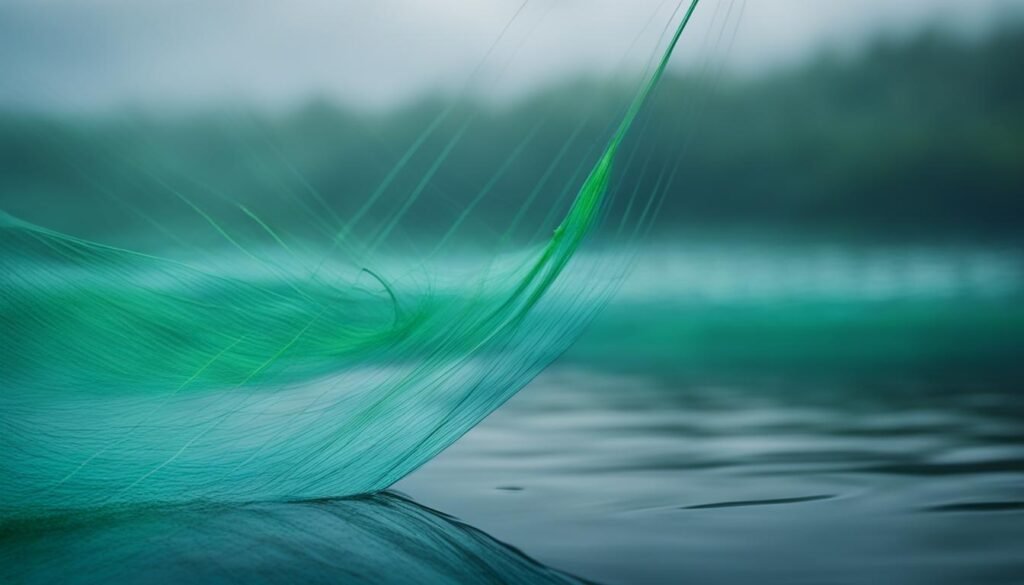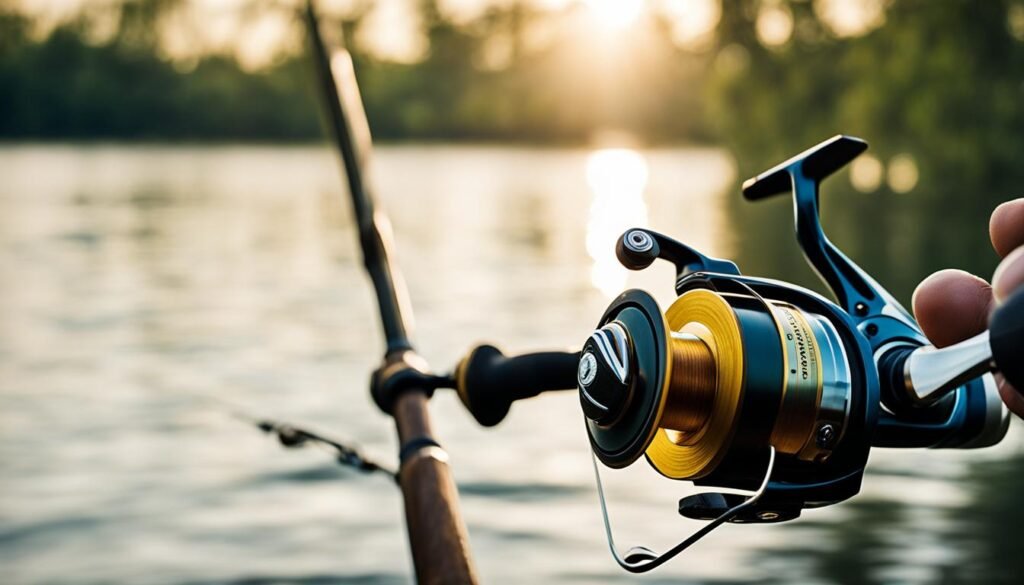When it comes to fishing, your choice of fishing line is crucial for your success. With so many options available on the market, it can be overwhelming to decide which fishing line is best for your needs.
In this ultimate guide, we will break down the different types of fishing lines and their characteristics to help you make an informed choice. Whether you’re fishing in saltwater or freshwater, using different fishing techniques, or looking for a strong and durable line, we’ve got you covered.
By the end of this guide, you’ll have all the information you need to select the perfect fishing line for your angling adventures.
Understanding Fishing Line Personalities
Before we dive into the different types of fishing lines, it’s important to understand the personalities of each line. Fishing lines have various characteristics that can impact their performance in different fishing situations. These personalities include abrasion proof, buoyancy, memory, strength, stretch, and visibility. By understanding these traits, you’ll be able to choose the right fishing line for your specific needs and improve your chances of landing a great catch.
Let’s start with abrasion proof. This refers to the line’s resistance to wear and tear caused by rocks, debris, or fish scales. An abrasion-proof fishing line is essential for fishing in rugged environments or targeting species with sharp teeth or rough mouths.
Buoyancy is another important factor to consider. Some fishing lines float on the water’s surface, while others sink. The buoyancy of the line affects how it interacts with the bait or lure and can determine the success of your fishing technique.
Memory refers to the line’s tendency to retain the shape it was wound in. A fishing line with high memory may develop coils or loops, which can affect casting distance, accuracy, and overall performance.
Strength is a crucial characteristic, as it determines the line’s ability to withstand the force exerted by a fighting fish. The higher the strength, the better the chances of landing and controlling your catch.
Stretch refers to the line’s ability to elongate under pressure. A line with low stretch offers better sensitivity, allowing you to detect even the slightest nibbles or strikes. However, a line with too much stretch may result in a delayed hookset or reduced control over the fish.
Visibility is all about how easily fish can see the fishing line. Highly visible lines may spook fish, especially in clear water or when targeting finicky species. On the other hand, low visibility lines, such as fluorocarbon, can increase your chances of getting a bite.
Monofilament: The Old Reliable

Monofilament fishing line is the most commonly used fishing line and has been a favorite among anglers for decades. Its reliability, versatility, and affordability make it a go-to choice for many fishing enthusiasts.
One of the key advantages of monofilament line is its ability to stretch. This stretchiness makes it forgiving and durable, allowing it to absorb the shock of sudden fish strikes and aggressive fights. It also provides a natural bait presentation, which can entice more bites. Additionally, the stretch of monofilament line acts as a shock absorber, minimizing the risk of line breakage when dealing with aggressive or powerful fish.
However, monofilament line has its drawbacks. One downside is its memory, which means it tends to retain the shape it had on the fishing reel. This can result in tangles and twists, requiring anglers to regularly manage the line and manually remove any kinks before casting. Another disadvantage is the reduced sensitivity compared to other fishing lines, such as fluorocarbon or braided lines. This means that anglers may not feel the lightest nibbles or subtle movements, potentially leading to missed bites.
Despite these limitations, many anglers still choose monofilament for its ease of use, knot tying ability, and all-purpose applications. Its forgiving nature makes it an excellent choice for beginner anglers who are learning the ropes of fishing, as well as for anglers fishing in freshwater environments where sensitivity may not be as crucial as in clear or deep water situations.
Overall, monofilament fishing line remains a reliable and popular option for anglers of all skill levels. Its affordability, versatility, and forgiving nature make it a staple in many tackle boxes. Whether you’re casting in a lake, river, or pond, monofilament line can help you catch a wide variety of freshwater fish species.
Copolymer: A Basic Improvement
When it comes to choosing a fishing line, copolymer fishing line is a newer alternative to traditional monofilament line that offers some notable improvements.
Unlike monofilament line, copolymer lines are made by incorporating two or more strands of different materials. This combination results in a fishing line with increased strength, reduced stretch, improved abrasion resistance, and customized characteristics. Copolymer lines offer anglers the best of both worlds – the familiar feel of monofilament with enhanced performance.
One of the key advantages of copolymer fishing line is its improved strength compared to monofilament. The incorporation of multiple materials allows manufacturers to create a line that is stronger and more resilient, reducing the chances of breaking or snapping during a fight with a fish.
Copolymer lines also have reduced stretch, which provides anglers with better sensitivity and increased ability to detect the most subtle bites. This is especially beneficial when fishing in situations where fish may be finicky or have a soft bite, as it allows the angler to feel even the slightest tug on the line.
Furthermore, copolymer lines offer improved abrasion resistance, making them more durable and less prone to damage when in contact with rocks, structure, or other rough surfaces. This durability ensures that the line maintains its strength and integrity over time and allows anglers to fish confidently in challenging environments.
Manufacturers have the flexibility to create unique copolymer formulas by adjusting the combination of materials, allowing for customized characteristics to suit specific fishing techniques and scenarios. Whether you’re trolling, casting, or finesse fishing, there is a copolymer line designed to meet your needs.
Anglers choose copolymer fishing line for various reasons. It provides enhanced performance compared to traditional monofilament line without straying too far from its familiar characteristics. The increased strength, reduced stretch, improved abrasion resistance, and customized characteristics make copolymer lines a popular choice among anglers seeking improved performance and reliability on the water.
Fluorocarbon: The Invisible Advantage

When it comes to fishing in clear water and targeting finicky fish, fluorocarbon fishing line is a game-changer. Its near-invisibility underwater gives you a significant advantage when trying to entice wary fish into biting. With a refractive index that closely matches water, fluorocarbon line is less visible to fish, allowing you to present your bait or lure in a more natural and convincing way.
One of the major pros of fluorocarbon line is its high abrasion resistance. It can withstand the rough and sharp edges of rocks, submerged branches, and other obstacles you may encounter while fishing. This durability makes fluorocarbon a reliable choice, minimizing the risk of losing your catch.
Additionally, fluorocarbon line offers low stretch and excellent sensitivity. This means you can detect even the slightest nibble or movement, enabling you to react quickly and make precise hooksets. Its sensitivity is especially advantageous when fishing in deep water or situations where fish may be more subtle in their bites.
Despite these advantages, fluorocarbon line has some cons to consider. It can be stiffer compared to other lines, which can make it less manageable and more challenging to cast. Knot tying can also be trickier, requiring special techniques to ensure proper knot strength and security. Additionally, fluorocarbon line tends to sink faster than other lines, making it less suitable for certain fishing techniques.
Many anglers use fluorocarbon as a leader material, combining it with other lines such as monofilament or braided line. By using fluorocarbon leaders, you can enhance its invisibility and increase your chances of getting a bite. This is especially useful when targeting species that are particularly sensitive to line visibility or when fishing in clear water conditions.
Fluorocarbon line provides anglers with the invisible advantage needed to fool even the most cautious fish. With its near-invisibility, high abrasion resistance, low stretch, and excellent sensitivity, fluorocarbon line is a valuable tool in your fishing arsenal. Despite its limitations in terms of stiffness, knot tying, and sinking, many anglers choose fluorocarbon for its unique properties and enhanced invisibility underwater.
Braided: Strength and Sensitivity Combined
Braided fishing line is incredibly strong and offers high sensitivity, making it a popular choice among anglers who need to feel every nibble and make precise hooksets. Its thin diameter provides excellent strength-to-diameter ratio, allowing you to cast further and detect even the slightest bites. The tightly woven strands of synthetic fibers give braided line its impressive strength, making it suitable for battling large and aggressive fish species.
One of the key advantages of braided fishing line is its superior abrasion resistance, making it ideal for fishing in rocky or vegetation-heavy areas. The tough construction ensures durability even in the harshest conditions, reducing the risk of snapping or fraying. Additionally, braided line has minimal stretch, providing you with better sensitivity and improved hook-setting power.
However, braided fishing line does come with a few drawbacks. Due to its composition and lack of transparency, it can be more visible to fish in certain conditions, especially in clear water or under bright sunlight. Additionally, braided line tends to be more expensive compared to other types of fishing lines on the market. Finally, tying knots with braided line can be challenging, requiring specialized techniques or the use of specific knot types.
Many anglers choose braided fishing line when fishing in heavy cover or deep water, as its superior strength and sensitivity allow them to navigate through obstacles and feel subtle movements from fish hiding in the structure. Anglers targeting species with soft bites, such as bass or walleye, also opt for braided line to ensure they can detect even the slightest tug. Braided line can be used alone or in combination with a monofilament or fluorocarbon leader to mitigate some of its visibility disadvantages.
Choosing the Right Fishing Line for Your Needs
When it comes to selecting the perfect fishing line, you need to consider various factors that will ensure the best performance for your specific needs. By understanding these factors and matching them to the characteristics of each fishing line, you can make an informed decision. Let’s explore the key factors to consider when choosing a fishing line.
Fishing Technique
The fishing technique you use plays a vital role in determining the type of fishing line you should choose. Different techniques require different line properties to maximize your chances of success. For example, if you’re using finesse techniques that require sensitivity and precision, a low-stretch fluorocarbon line would be a great choice. On the other hand, if you’re fishing in heavy cover and need the strength to pull fish out, a braided line with its superior strength and sensitivity would be more suitable.
Target Species
Your target species also plays a significant role in selecting the right fishing line. Different species have varying behaviors, habitats, and feeding habits. For instance, if you’re targeting elusive and line-shy fish in clear water, a fluorocarbon line’s invisibility is advantageous. Consider the specific characteristics of the species you’re targeting and choose a fishing line that matches those requirements.
Type of Water
The type of water you’ll be fishing in is another crucial factor in choosing the right fishing line. Saltwater and freshwater environments have different conditions that affect the performance of the line. Saltwater can be harsher on fishing lines due to its corrosive nature, requiring lines specifically designed to withstand the challenges. Freshwater, on the other hand, allows for more versatility in line choices. Consider the type of water you’ll be fishing in and select a line that is suitable for that environment.
Maintaining and Replacing Your Fishing Line
Just like any other piece of fishing gear, your fishing line requires regular maintenance and occasional replacement to ensure optimal performance. By taking proper care of your line, you can prolong its lifespan and avoid any mishaps on your fishing trips.
To maintain your fishing line, it’s important to regularly inspect it for signs of wear and damage. Look out for nicks, cuts, and brittleness, as these are indicators that your line may need to be replaced. If you notice any visible damage or if the line feels brittle, it’s time to get a new one.
Monofilament lines should generally be replaced at least once a year, while braided lines can last longer with proper care. However, it’s important to note that the lifespan of your fishing line will ultimately depend on factors such as usage, exposure to sunlight, and the environment in which you fish.
In addition to regular inspection and replacement, proper storage is crucial to maintaining the quality of your fishing line. Make sure to store it in a cool, dry place away from direct sunlight and extreme temperatures. Avoid storing your line in areas where it can get tangled or exposed to chemicals that could potentially weaken its strength.

